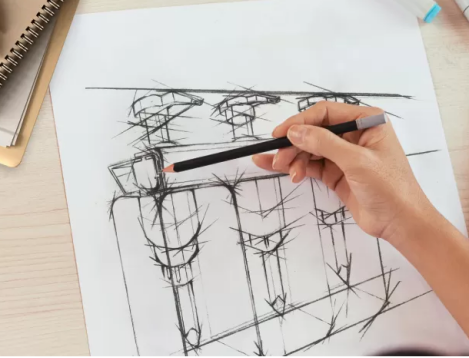In the highly competitive hygiene and personal care industry, choosing the right manufacturing approach for shampoo dispensers can make a significant difference in product quality, brand identity, time-to-market, and long-term profitability. For business buyers—especially those sourcing large volumes for hotels, gyms, retail chains, or private-label brands—the decision between OEM (Original Equipment Manufacturer) and ODM (Original Design Manufacturer) partnerships is a strategic one.
This article dives deep into the differences between OEM and ODM shampoo dispensers, explores the pros and cons of each model, and helps procurement managers, brand owners, and facility suppliers determine which approach best aligns with their business goals.

Before evaluating pros and cons, it’s important to clearly define what each model entails:
In an OEM model, the buyer provides the manufacturer with a custom design or technical specifications. The manufacturer then produces shampoo dispensers strictly according to the buyer’s requirements, usually with the buyer’s brand.
In an ODM model, the manufacturer already has an existing product design that the buyer can adopt, either as-is or with minor customization (such as logos or packaging). This is often faster and less resource-intensive for the buyer.
Feature | OEM Shampoo Dispensers | ODM Shampoo Dispensers |
Product Design | Fully customized by the buyer | Pre-designed by the manufacturer |
Time to Market | Longer lead times | Shorter lead times |
Tooling & Molds | Usually required | Often already available |
MOQ (Minimum Order Quantity) | Typically higher | Can be more flexible |
Branding | Fully aligned with buyer's identity | Semi-customizable |
R&D Involvement | High | Low |
Cost | Higher initial investment | Lower upfront cost |
For brands that want to stand out in the crowded marketplace, OEM provides full design freedom. You can define every element—from pump mechanism to wall-mount system, to bottle transparency and labeling.
You typically retain ownership of the design, which adds long-term brand value and prevents your competitors from selling the same or similar models.
Hotels, high-end retail brands, and hospitality groups often choose OEM for long-term consistency and exclusive design rights across all locations.
Need a tamper-proof lock, a child-safe nozzle, or a smart refill indicator? OEM is the way to go when your product must meet very specific usage or safety requirements.
Custom mold development, tooling, and prototype testing can require significant capital before mass production begins.
From concept to delivery, an OEM project might take several months—sometimes up to a year—depending on complexity and compliance testing.
Manufacturers often require high MOQs to justify the tooling and production costs, which may not be feasible for smaller businesses.
With a ready-to-go design, you can launch or scale your product quickly—often within weeks of placing the order.
No need to invest in R&D, tooling, or prototyping. This model reduces both capital expenditure and risk, especially for trial batches or entry into new markets.
ODM shampoo dispensers are often based on tried-and-tested designs that have already passed durability, leak-resistance, and user experience evaluations.
ODM models are well-suited for companies who wish to offer their own branded product without going through the design process.
Your product may be similar or identical to what other brands are offering, which can dilute brand uniqueness.
While you can add a logo or change the color, significant changes to the mechanism or structure are often not feasible without switching to an OEM model.
Since the design is owned by the manufacturer, there’s always a chance the same design is sold to multiple brands, even in the same market.
If you’re building a long-term brand with specific product values (eco-friendly materials, ergonomic design, etc.), OEM might serve you better. For fast-paced retail or B2B distribution, ODM can offer the speed and cost-efficiency needed.
OEM requires more upfront investment in design and tooling, while ODM is more cash-flow-friendly in the short term.
Luxury hotels and boutique brands expect unique designs (favoring OEM), while budget hotels or chain gyms may prioritize cost and delivery time (favoring ODM).
Consider whether the model supports consistent quality, availability of parts, and global compliance certifications (like CE, RoHS, etc.).
Situation | Recommended Model |
Launching a high-end brand | OEM |
Expanding product range quickly | ODM |
Replacing dispensers in 500+ hotel rooms | OEM |
Trial order for new market testing | ODM |
Seeking full customization for patented design | OEM |
Limited budget for startup hygiene brand | ODM |
There is no one-size-fits-all answer. The best choice depends on your business model, budget, time constraints, and product vision. Many large buyers even use a hybrid strategy: starting with ODM for speed, then moving to OEM as the brand scales.
At Wenesy, we specialize in high-quality shampoo dispensers and offer both OEM and ODM manufacturing solutions tailored to your needs. Whether you’re seeking full customization or a reliable ready-made product to brand as your own, we provide scalable, cost-effective, and globally compliant solutions—ensuring that your business stands out in the competitive hygiene and amenities market. Contact us right now!
Relation Products
Wenesy Cosmetics Ltd.
Copyright © Wenesy Cosmetics Ltd. Sitemap